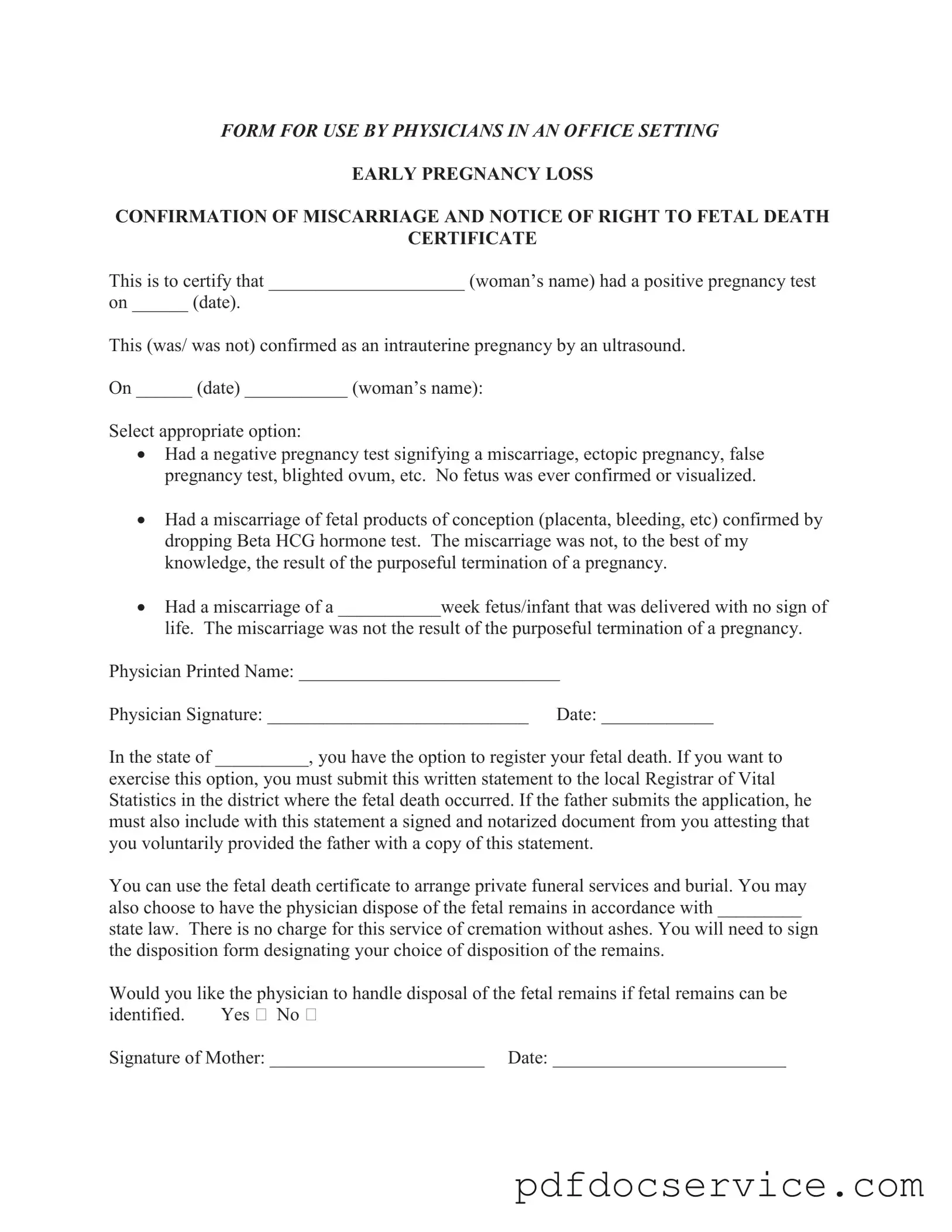The Miscarriage Discharge Paper form serves as an official document for physicians to confirm a miscarriage. It provides important details about the pregnancy, including the positive pregnancy test, ultrasound results, and the nature of the miscarriage. This form also informs the patient of their rights regarding fetal death registration and the handling of fetal remains.
To complete the form, the following information is needed:
-
The woman's name
-
The date of the positive pregnancy test
-
Confirmation of whether the pregnancy was intrauterine
-
The date of the miscarriage
-
A selection of the appropriate miscarriage option
-
The physician's printed name and signature
-
The date of completion
What options can be selected regarding the miscarriage?
The form provides three options regarding the miscarriage:
-
A negative pregnancy test indicating a miscarriage or other pregnancy-related issues.
-
A confirmed miscarriage of fetal products of conception, with no purposeful termination.
-
A miscarriage involving a fetus or infant delivered without signs of life, also with no purposeful termination.
What are the rights regarding fetal death registration?
In certain states, individuals have the right to register a fetal death. To do this, the completed form must be submitted to the local Registrar of Vital Statistics in the district where the fetal death occurred. If the father submits the application, he must include a signed and notarized statement from the mother confirming she provided him with a copy of the discharge paper.
Can the fetal death certificate be used for funeral arrangements?
Yes, the fetal death certificate can be used to arrange private funeral services and burial. It serves as an official document that allows parents to make necessary arrangements for their fetal remains.
What options are available for the disposal of fetal remains?
Parents have several options for the disposal of fetal remains. They can choose to have the physician handle the disposal in accordance with state law, which may include cremation without ashes. Alternatively, parents can opt for private funeral services. A disposition form must be signed to designate the choice of remains handling.
Is there a cost associated with the disposal of fetal remains?
There is no charge for the service of cremation without ashes. If parents choose this option, they simply need to sign the appropriate disposition form to authorize the process.
